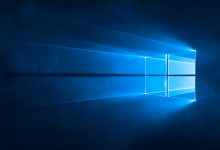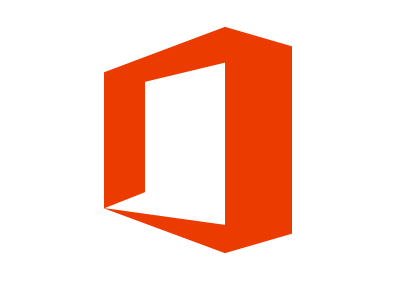开源软件无线电(Gnuradio)或 开源软件定义无线电 是一个对学习,构建和部署软件定义无线电系统的免费软件工具包。发起于2001年,Gnuradio1 现在成为 GNU 的正式项目之一。慈善家 John Gilmore 发起并捐助 $320,000.00 (US) 给 Eric Blossom 用来构建代码和维护。
Gnuradio 是一个无线电信号处理方案,它遵循 GNU 的 GPL 的条款分发。它的目的是给普通的软件编制者提供探索电磁波的机会,并激发他们聪明的利用射频电波的能力。
正如所有软件定义无线电系统的定义, 可重构性是其最重要的功能。再也不需购买一大堆发射接收设备,只要一台可以装载信号处理软件(这里:Gnuradio)通用的设备。目前它虽然只定义几个有限的无线电功能,但是只要理解无线发射系统的机理(算法),你便可以任意的配置去接受它。
Gnuradio 起源于美国的麻省理工学院的 SpectrumWare 项目小组开发的 Pspectra 代码的分支。2004年被完全重写。所以今天的 Gnuradio 已不包含原 Pspectra 任何代码。另外值得一提的是 Pspectra 已被用作创立商业化的 Vanu Software Radio.
Gnuradio 开发了通用软件无线电外设(USRP 和USRP2 ),它是一个包含4个64 MS/s 的12位 ADC,4 个 128 MS/s 的 14 位的 DAC,以及其它支持线路包括高速的 USB 2.0 接口。该USRP能够处理的信号频率高达16 MHz宽。一些发射器和接收器的插件子板,可覆盖0至5.9MHz 频段。 它是 Ettus 研发的。
Introduction to GNU Radio and Software Radio
What is GNU Radio?
GNU Radio is a framework that enables users to design, simulate, and deploy highly capable real-world radio systems. It is a highly modular, “flowgraph”-oriented framework that comes with a comprehensive library of processing blocks that can be readily combined to make complex signal processing applications.
GNU Radio has been used for a huge array of real-world radio applications, including audio processing, mobile communications, tracking satellites, radar systems, GSM networks, Digital Radio Mondiale, and much more – all in computer software.
It is, by itself, not a solution to talk to any specific hardware. Nor does it provide out-of-the-box applications for specific radio communications standards (e.g., 802.11, ZigBee, LTE, etc.,), but it can be (and has been) used to develop implementations of basically any band-limited communication standard.
Why would I want GNU Radio?
Formerly, when developing radio communication devices, the engineer had to develop a specific circuit for detection of a specific signal class, design a specific IC that would be able to decode or encode that particular transmission and debug these using costly equipment.
Software-Defined Radio (SDR) takes the analog signal processing and moves it, as far as physically and economically feasible, to processing the radio signal on a computer using algorithms in software.
You can, of course, use your computer-connected radio device in a program you write from scratch, concatenating algorithms as you need them and moving data in and out yourself. But this quickly becomes cumbersome: Why are you re-implementing a standard filter? Why do you have to care how data moves between different processing blocks? Wouldn’t it be better to use highly optimized and peer-reviewed implementations rather than writing things yourself? And how do you get your program to scale well on a multi-core architectures but also run well on an embedded device consuming but a few watts of power?
Enter GNU Radio: A framework dedicated to writing signal processing applications for commodity computers. GNU Radio wraps functionality in easy-to-use reusable blocks, offers excellent scalability, provides an extensive library of standard algorithms, and is heavily optimized for a large variety of common platforms. It also comes with a large set of examples to get you started.
Digital Signal Processing
As a software framework, GNU Radio works on digitized signals to generate communication functionality using general-purpose computers.
A little signal theory
Doing signal processing in software requires the signal to be digital. But what is a digital signal?
To understand better, let’s look at a common “signal” scenario: Recording voice for transmission using a cellphone.
A personal physically speaking creates a sound ‘signal’ – the signal, in this case, is comprised of waves of varying air pressure being generated by the vocal chords of a human. A time-varying physical quantity, like the air pressure, is what is defined as a signal.
Applying Digital Signal Processing to Radio Transmissions
The same principles as for sounds can be applied to radio waves:
A signal, here electromagnetic waves, can be converted into a varying voltage using an antenna.
A modular, flowgraph based Approach to Digital Signal Processing
GNU Radio is a framework to develop these processing blocks and create flowgraphs, which comprise radio processing applications.
As a GNU Radio user, you can combine existing blocks into a high-level flowgraph that does something as complex as receiving digitally modulated signals and GNU Radio will automatically move the signal data between these and cause processing of the data when it is ready for processing.GNU Radio comes with a large set of existing blocks. Just to give you but a small excerpt of what’s available in a standard installation, here’s some of the most popular block categories and a few of their members:
Waveform Generators
- Constant Source
- Noise Source
- Signal Source
Modulators
- AM Demod
- Continuous Phase Modulation
- PSK Mod / Demod
- DPSK Mod / Demod
- GMSK Mod / Demod
- QAM Mod / Demod
- WBFM Receive
- NBFM Receive
Instrumentation
- Constellation Sink
- Frequency Sink
- Histogram Sink
- Number Sink
- Time Raster Sink
- Time Sink
- Waterfall Sink
Math Operators
- Abs
- Add
- Complex Conjugate
- Divide
- Integrate
- Log10
- Multiply
- RMS
- Subtract
Channel Models
- Channel Model
- Fading Model
- Dynamic Channel Model
- Frequency Selective Fading Model
Filters
- Band Pass / Reject Filter
- Low / High Pass Filter
- IIR Filter
- Generic Filterbank
- Hilbert
- Decimating FIR Filter
- Root Raised Cosine Filter
- FFT Filter
Fourier Analysis
- FFT
- Log Power FFT
- Goertzel (Resamplers)
- Fractional Resampler
- Polyphase Arbitrary Resampler
- Rational Resampler (Synchronizers)
- Clock Recovery MM
- Correlate and Sync
- Costas Loop
- FLL Band-Edge
- PLL Freq Det
- PN Correlator
- Polyphase Clock Sync
Using these blocks, many standard tasks, like normalizing signals, synchronization, measurements, and visualization can be done by just connecting the appropriate block to your signal processing flow graph.
Also, you can write your own blocks, that either combine existing blocks with some intelligence to provide new functionality together with some logic, or you can develop your own block that operates on the input data and outputs data.
Thus, GNU Radio is mainly a framework for the development of signal processing blocks and their interaction. It comes with an extensive standard library of blocks, and there are a lot of systems available that a developer might build upon. However, GNU Radio itself is not a software that is ready to do something specific — it’s the user’s job to build something useful out of it, though it already comes with a lot of useful working examples. Think of it as a set of building blocks.
官方网站:https://wiki.gnuradio.org
下载地址
开源软件无线电GNU Radio官方下载 2023.11.06 Win Mac Linux
https://www.123pan.com/s/PjcA-SjORA.html
https://pan.baidu.com/s/1FWON6OTf23Qw2ypPdIHedg?pwd=dvgb
开源软件无线电GNU Radio官方下载Windows macOS Linux:
https://wiki.gnuradio.org/index.php?title=InstallingGR
Windows:Run Windows Radioconda installer
and launch “GNU Radio Companion” from the Start menu
macOS Intel: Run macOS Radioconda installer (x86_64)
Apple Silicon: Run macOS Radioconda installer (aarch64)
Linux:
On Ubuntu and Debian, installing GNU Radio from binaries is as easy as executing:
$ apt-get install gnuradio
On Fedora, run:
$ yum install gnuradio
 落尘之木
落尘之木





















评论前必须登录!
注册